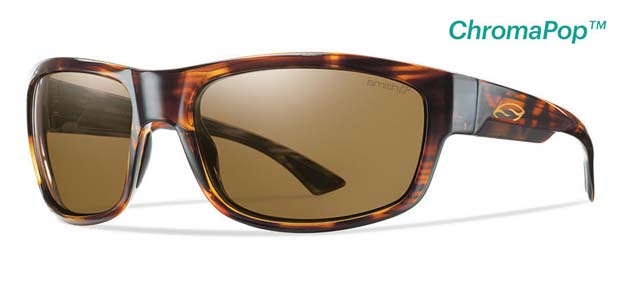[dropcap]F[/dropcap]ly fishing offshore, inshore, surf, pier, flats, river, stream, salt marsh, canal, creek, pond or lake ‘requires’ having a very good pair of polarized sunglasses. Yes, “requires” is the appropriate transitive verb. Assuming, of course, you want to catch something, save your eyes from destructive UV rays and keep both eyes in working order by protecting them from an errant cast.
Being polarized, as in sunglasses not politics
“Light that reflects off the water is generally polarized horizontally. Polarizing lenses work by blocking these rays with vertically orientated polarizes or ‘grates’. The results are amazing. Not all the glare bounces back horizontally. You may need to tilt your head a bit from side to side to get the maximum effect.” – Streamside Fly Fishing
According to an industry source (Smith Optics’ Meghan Moran and Ashley) and several retail sources: Jorge Martinez / Fly Shop of Miami; Carter / The Fish Hawk in Atlanta and Jeff Wright / Alpharetta Outfitters in Alpharetta, GA amber (some calling amber brown) colored polarized sunglasses are the most popular lens color, and glass, Smith Optics says, still outsells Polycarbonate (plastic).
Type of lenses

This new technology, called ChromaPop by Smith Optics, just might be a game changer. It gets the lighter weight “plastic” lens closer to the clarity and contrast performance of glass lenses. The price, however, hovers near the higher price of glass polarized sunglasses. Too, the style options are, at this time, somewhat limited.
Glass lenses are by far the superior in terms of optical clarity. They also resist scratches better than other lens material. However, they are heavier, more expensive, and shatter more easily than other lens options.
Polycarbonate lenses are lighter weight, less expensive, and more shatter-resistant than glass, but they scratch more easily and don’t provide as much optical clarity.
There are acrylic polarized lenses and they are cheap. However, they have a polarizing film glued on that is barely useful and does not block UV. Don’t buy of these cheapos – waste of money.
Amber colored lens users can learn to adjust to each new light condition during the day and not be at a loss
Most people can’t afford to buy a whole bunch of differently tinted glasses to fish. They’re expensive, have a bad reputation of getting lost and the rough handling dished out by anglers usually limits their life span. Too, there’s lots of fishing light scenarios: cloudy, bright sunshine, low light of dawn and dusk and differently colored stream and flats bottoms.
The lighter colored polarized sunglasses are great for low light days or dawn and dusk light, but they’re weak on cloudy days or in heavily covered fauna creeks and streams.
Darker polarized lenses (dark brown/gray) are excellent glare breakers. However, their strongest suit is when you’ve been fishing several days in a row and your eyes become weary – dark colors are more restful.
More about color
Amber is an excellent all ’round color that delivers the brightest vision.
Grey maintains color saturation and natural contrast in medium to bright conditions, especially if you are wearing green contact lenses. They are great in saltwater but not freshwater. In freshwater the grey tint reduces all contrast between the fish and its surroundings.
Copper lenses are a great all round color made to cut glare and enhance both contrasts and color in any light conditions.
Side guards
A pair of polarized sunglasses for fishing are greatly aided by side guard protection. Without them, at some point in the day, the angle of the sun and your position will be will at odds, creating a side glare that reduces the polarizing effect of your glasses. Plus, that side glare may quickly tire your eyes.
A new technology
According to Meghan Moran (Smith Optics), the new Chromapop™ Polarized Lenses technology has substantially increased clarity of non-glass lenses. She said: “It’s popularity has effected sales in both the salt and freshwater regions.” She added: “ChromaPop lenses maximize color and most importantly contrast. A performance previously reserved just for glass. The enhancing factor improves the speed of visual processing – you see truer color, faster.”
Beware
Not all polarized sunglasses are equal, far from it.


